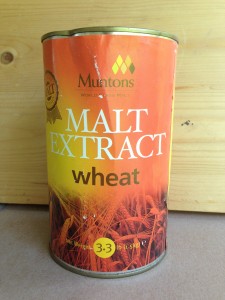This is the first of two articles on extract wort production in the series of articles on barleywine.
When making a barleywine wort from malt extract, there are several things the brewer should consider. All the usual advice still applies — use fresh malt extract, boil as much volume as you can (and still maintain a vigorous boil) and add some of the malt extract late in the boil (if you are boiling less than the full wort).
In addition, some aspects of wort production are only going to apply to barleywine or other big, hoppy beers. One thing that always improves an extract beer is supplementing the extract wort with wort a partial mash. Adding some base malt to your extract recipe adds back some of the malt aroma that was lost when the malt extract was concentrated or dried. This is true for a barleywine as well, but I would recommend making a small partial mash — around 2.0–4.0 lbs. (0.91–1.8 kg) — rather than a larger one. For one thing, although some malt aroma is lost in the manufacture of malt extract, some of it is retained. In a barleywine wort, the large amount of malt extract required means that some malt aroma will be present. More importantly, in an extract barleywine, reducing the amount of trub and hop debris should be a priority. This is especially true when the brewer is boiling less than a full wort.


Recent Comments